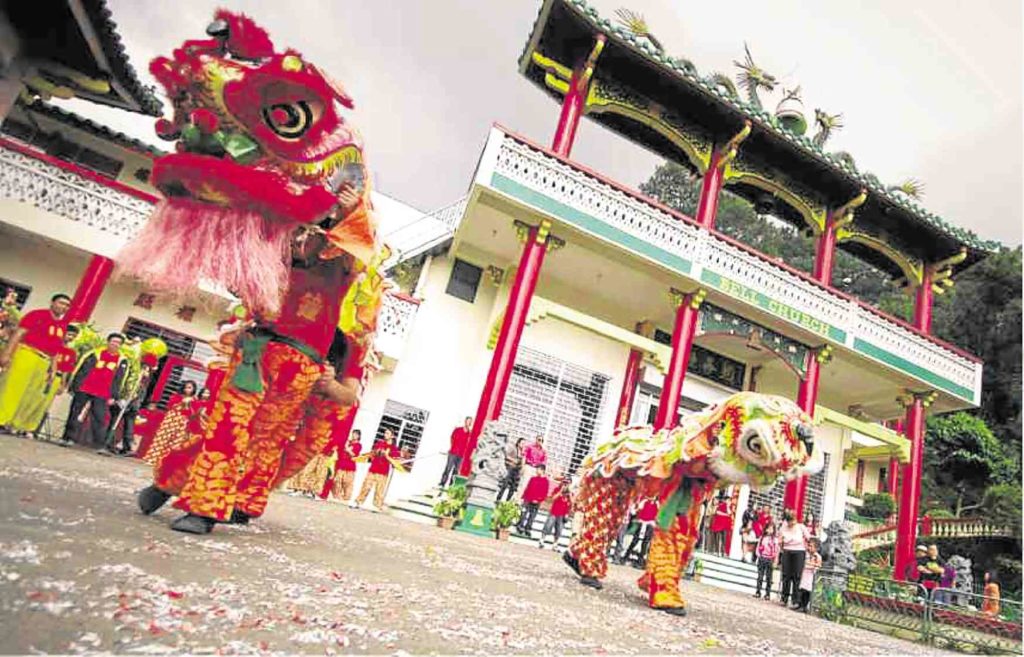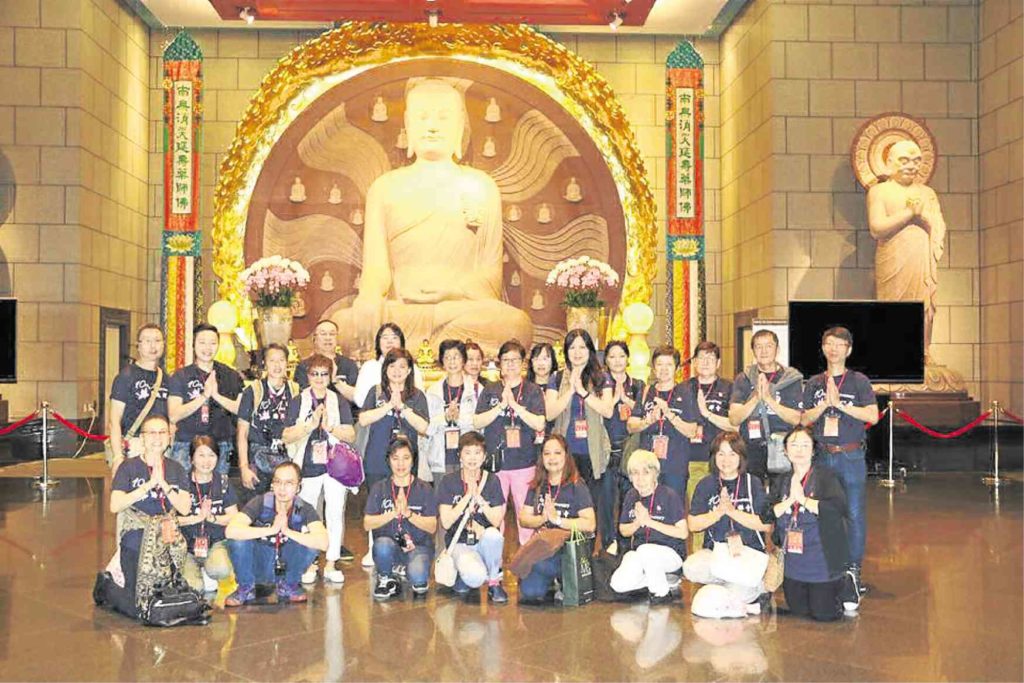Chinese Temples to celebrate the Year of the Earth Dog

Bell Church
Bell Church
This Chinese temple in La Trinidad province is a popular tourist destination. Formerly called the Chinese Buddhist Temple, the Bell Church stands on a one-hectare property with a hilly landscape as its backdrop.
The Bell Church was founded by Ng Pee (Kok Fan), a Chinese immigrant. In 1954, Ng Pee used a dining hall of a restaurant to preach. But due to the limited space and the growing number of devotees, the place of worship had to be transferred to a house on Kilometer 6 in La Trinidad. It was again transferred to its present site on Kilometer 3.
Displayed in the several pagodas are images of saints and Buddhas. The bust of founder Ng Pee is also found in the compound. Facing the temple are ponds adorned with floating lotuses, which are said to symbolize beauty and purity.
The volume of visitors to the Bell Church hits its peak during the Chinese New Year celebration or the “Spring Festival” as this event usually coincides with Baguio City’s own Panagbenga Festival. Last year, a gift giving program was held at the Bell Church.
Fo Guang Shan Chu Un Temple
There are several Fo Guang Shan (which means “Buddha’s Light Mountain”) temples in the Philippines, with the first located in Cebu City and the main branch temple in Manila. Other branch temples are located in Bacolod City and Iloilo City.
The first Fo Guang Shan, called the Chu Un Temple, was built in Cebu City in 1989. Masters staying at the temple have encouraged visitors and locals to join in the temple’s Chinese New Year celebration to experience Chinese culture. Gold, orange, and red paper lanterns line the pathway to the temple, bearing Chinese characters and symbols.
Featured in previous Lunar New Year celebrations in the temple were tai chi and calligraphy exhibitions, as well as cultural performances.
Fo Guang Shan Mabuhay Temple
Fo Guang Shan’s main branch temple is the Mabuhay Temple. Located in Malate, this Chinese temple has a main shrine, which houses a white jade statue of the Sakyamuni Buddha. It also has an art gallery and a traditional Ch’an-style meditation hall that holds meditation classes. The restaurant located at the temple serves vegetarian meals and beverages.
Among the activities the temple will be holding for the Lunar New Year are the sounding of the bell of peace, sutra transcription and prayers, the Thousand-Buddha prayer service, and Light Offering Dharma services, along with other dynamic and interactive exhibits.
Ocean Sky Chan Monastery

Ocean Sky Chan Monastery
This Chinese temple located in Little Baguio in San Juan City is comprised of an elegant and spacious building with a lecture hall and a meditation hall. It also has a small pocket garden at the building’s entrance.
The Ocean Sky Chan Monastery will be having a Chinese New Year blessing ceremony on Feb. 16. Every year, they celebrate the new beginning with an auspicious ceremony.
In the morning, they will be holding the following activities: the praise of purification with water and willow, a chanting of the “Universal Gateway of Guan Yin Bodhisattva”, a grand meal offering, a blessing ceremony, a Dharma talk, the offering to the Sangha, a dedication of merits, and the striking of the Dharma drum and Bodhi bell.
In the afternoon, they will serve vegetarian lunch, and then hold the highlight activity, the “Ten Auspicious Gateways to the Mind.”
Ma-Cho Temple
Among the Chinese folk deities, Ma-Cho (or Ma-Tzu) is known as the powerful queen of heavens and protector of the sea. The Chinese temple named after her is a tourist spot in San Fernando City, La Union province.
The temple features a breathtaking panoramic view of the West Philippine Sea. It also features a bamboo garden and image of Kwan Yen (Goddess of Mercy). Tourist influx in the temple peaks during Chinese New Year and the Ma-Tzu Festival, a religious festival held every September.
Sources: Inquirer Archives, mabuhaytemple.com, oceanskyzen.org, baguio.gov.ph, sanfernandocity.gov.ph, cebudailynews.inquirer.net
